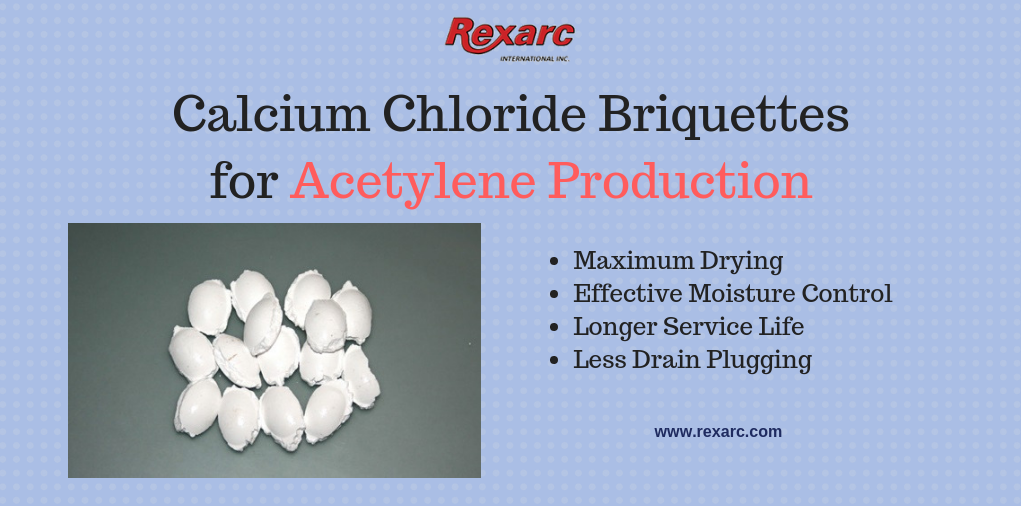Rexarc is currently open from 7:30 AM – 4:00 PM EST, Monday – Friday. Read More
Rexarc is currently open from 7:30 AM – 4:00 PM EST, Monday – Friday. Read More

Acetylene is one of the common raw materials used in the production of other chemicals. It is also employed for welding various metals. Being a popular industrial gas, acetylene is often produced using acetylene generation plants. Rexarc is one of the leading acetylene gas plant manufacturers in the world. These compressed gas plants are manufactured in adherence to the manufacturing practices mentioned in the Section VIII of the ASME codes. As many chemical processes must, acetylene production also involves purification processes and chemicals. Calcium chloride is one of the chemicals involved in acetylene production. How does it contribute in the production process? Read the post to find answers.
How Does Calcium Chloride Aid in Acetylene Production?
Acetylene is produced from the combination of calcium carbide and water. Calcium carbide is a material created by heating the combination of coke and lime at extreme high temperatures. It is produced in a grayish rocklike form. The chemical reaction of acetylene is depicted through the chemical formula:
CAC2 + 2 H2O → C2H2 + CA(OH)2
This reaction is always performed under controlled conditions. During the process, calcium carbide is introduced to the generator, from a hopper. Often, two hoppers are used for the purpose, as one hopper is loaded while the other is emptied. In this process, acetylene rises from the lime water during the process. The acetylene gas manufactured in this process is saturated with moisture. Moisture content in acetylene affects its performance. To improve performance, the gas is dehydrated using mechanical processes and then a chemical process. For the chemical process, calcium chloride is used to remove moisture.
Calcium chloride, a compound of calcium and chlorine, is provided by Rexarc in the shape of briquettes. These briquettes are almond-shaped, and used in the acetylene production plants to dry acetylene. The briquettes are added to the Medium Pressure Driers (MPD) and High Pressure Driers (HPD) for drying acetylene gas. The calcium chloride has chemical properties that helps it attract, as well as keep water. During the process, the chemical remains inert. This makes it perfect for dehydrating acetylene at high and medium pressures. Experts at Rexarc recommend MPDs for the drying process because they aid in effective moisture control. Depending on your requirements, you may use more than one MPD, and in the capacity range of 2,000-6,000 SCFH. While using MPDs, it is important to use calcium chloride in correct sizes. The calcium chloride in the HPD removes moisture that would be transferred to the cylinders. Anhydrous calcium chloride provided by Rexarc assures long-term performance. Using calcium chloride that is too small will cause plugging in the condensate drains.
Typical Physical and Chemical Properties of Calcium Chloride
Rexarc’s calcium chloride is specially designed for dehydration of hydrocarbons in gaseous forms. The of this chemical have contributed to its use in the acetylene dehydration process.
Tips for Safe Handling of Calcium Chloride
As with any other chemicals, handling and using calcium chloride requires special attention. The following tips will help you handle the calcium chloride safely.
It is important that you always use calcium chloride in recommended sizes. Rexarc has researched and specified these product specifications to ensure efficient gas drying and proper equipment functioning. Rexarc provides calcium chloride in 400 pound steel drums. Customer satisfaction is a priority for experts at Rexarc.

We are a one stop shop from custom vessel production to full skidding, plumbing and instrumentation.

We stand by our processes and communicate with you on your project status as much or as little as you would like.

We continually reinvest in our people, business, and equipment technology to ship quality products on time.
